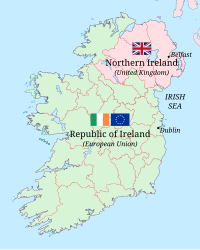
Photo from wikipedia
Regional cross-border electricity trading is popular in price and cooperation. It is a reliable path to alleviate the shortage of power supply during rapid economic growth. As an important export… Click to show full abstract
Regional cross-border electricity trading is popular in price and cooperation. It is a reliable path to alleviate the shortage of power supply during rapid economic growth. As an important export commodity, the pricing options for hydropower directly relate to the cooperation intention of business parties. This study demonstrates the price formation methods and internal relationships of cascade hydropower stations in CBET. To simulate the decision-making of a bilateral forward contract, a bi-level optimization model was constructed, and the objectives of each layer represent the interests of both parties. The BOM was linearized with Karush-Kuhn-Tucker conditions and strong duality, and finally solved using mixed-integer linear programming. The prices of CHSs in southwestern China were calculated under different pricing options and the results were absorbed in an actual transaction case. Consequently, the complementarity between different exporting countries was verified. The most suitable pricing option for CBET was determined, that is the unified electricity price based on the marginal cost, to be $481~\textrm {CNY/MW}\cdot \textrm {h}$ , which is 20% to 60% higher than the thermal and photovoltaic from other countries. Furthermore, national policy support and economic subsidies are key guarantees for the sustainable development of CBET, which can reduce the discount electricity price to below that of thermal generation by 30%.
Journal Title: IEEE Access
Year Published: 2022
Link to full text (if available)
Share on Social Media: Sign Up to like & get
recommendations!